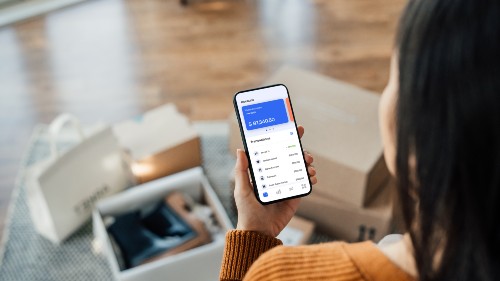When a customer applies for a home loan it can be a frustrating process. The level of documentation they must collect is huge. Some data they’re expected to provide — average monthly expenditure on entertainment, groceries, education, clothing and so on — is difficult to calculate with real accuracy. Figuring out whether or not a family can afford repayments is a terribly inexact science.
How much easier would this be if their bank’s systems automatically took care of the numbers, accurately and at the push of a button. Imagine if bank systems gathered the relevant data, confirmed income, figured out grocery spend, knew how much was owed on credit cards, and so on.
This is just one of the many benefits of Open Banking.
One of the most valuable outcomes of the above example is the quality of conversations the applicant could then have with their broker.
If it was identified that their children’s school fees were high, but that the area they were moving to had more affordable education options, the figures could be immediately adjusted to reflect real outcomes.
If they’d like to borrow more, to move higher up the real estate ladder, a meaningful conversation could be had around precisely what needs to change to make it possible.
There are benefits for all stakeholders in Open Banking.
The banking revolution has begun thanks to CDR
In 2020 the Consumer Data Right (CDR) legislation was rolled out in the banking sector. CDR allows consumers far greater access to and control over their own data. It also enables them to switch almost seamlessly between accounts and institutions.
Here at Frollo, we were the first fintech to be accredited under CDR legislation, and the first
to go live. We’re now responsible for over 95% of Open Banking activity in Australia. Frollo provides businesses with relevant technology, including Open Banking AI and Open Banking APIs. We also provide a free Open Banking app for consumers powered by Heroku — which is really to showcase what Open Banking can do.
Our own research has shown how keen consumers are to make the move to Open Banking apps.
- 68% would use a feature that shows all of their financial accounts in one place.
- 74% would use a feature to help them understand their spending by automatically categorising transactions.
- 63% would use a feature to speed up mortgage and other loan applications.
Consistently, over 20% of customers said they’d consider switching to another bank for these types of features.
How soon will Open Banking become a reality?
Open Banking is a reality right now. ANZ Bank is partnering with Frollo, for example, to extract data from ANZ customers’ other accounts to analyse, via our Open Banking platform. In our own consumer app users can already share data if you bank with one of the 20 banks who are confirmed Data Holders under the CDR legislation.
However, it’s early days, as at this time consumers are only able to use Open Banking in the Frollo app and with Regional Australia Bank (both approved Data Recipients).
Many banks are interested in using Open Banking to provide customers with a full view of their finances. Account aggregation has long been unachievable as banks didn’t want to utilise screen scraping. But Open Banking provides them with a regulated way to pull transaction data from other banks in real time. They also see the benefits of Open Banking for mortgage lending.
We have a system that uses AI to tell individuals when and how much they can pay off their credit card, as it can predict how much they’ll have in their account at the end of the month. Product switching also comes into play when the AI function tells a customer how much they will save by switching to a different account. Once ‘write access’ becomes available in Open Banking, it can automate much of the switching process.
When will all of this arrive? Australia’s Open Banking timeline began in August 2019, when the CDR legislation was passed. In July 2020, the big four banks had to start enabling customers to share their financial data, including transaction data, account balances, direct debits and payees.
On 1 July 2021, for close to 100 non-major authorised deposit-taking institutions (ADIs) these same obligations kicked in.
Along the way they have all had to do similar data sharing for their products, including their features, rates, fees and offers, and so on.
By February 2022, this process must be complete, meaning Open Banking apps such as the Frollo app can use data from all banks and ADIs to give consumers a complete picture of their finances.
What are the next steps to Open Banking and CDR?
Most important when you get started with Open Banking is to be very clear on your use case. This must all be outlined in your submission to be accredited.
- How are you going to use the data?
- Which systems are you going to use it in?
- How long are you going to use the data?
- What data don’t you need?
Then, it’s important to think about your model of accreditation, or whether you even need to be accredited for your use case. We’ve outlined the different ways to access CDR data in our white paper ‘New CDR Rules 2021’ to help you get started.
Finally, consider how you will deliver an exceptional customer experience through Open Banking. How will you thrill your customers?
It’s all about reimagining customer experience in a new world in which you finally have access to safe and secure, real-time financial data, because you do. There’s no reason to stick to the old, linear way of doing things. That’s the past. Open Banking is the future.
Hear more from Frollo and how they are empowering employees with the power of data from the Salesforce Industries Summit for Financial Services, on demand.





















